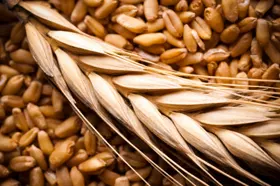
Biomass Energy
Biomass Energy as a Renewable Energy Resource
![]() Another interesting alternative energy source that can also be classed as a “renewable energy resource” is the development of Biomass Energy and Bioenergy.
Another interesting alternative energy source that can also be classed as a “renewable energy resource” is the development of Biomass Energy and Bioenergy.
Biomass energy is a term used for any kind of non-fossil fuel that is classified as being organic, biological or made of plant matter, and which can be converted into a usable energy source. Biomass is considered to be a vital resource on the earth to the point of being called a “Biorenewable Resource”.
Various biomass related technologies are being created that will enable living plant matter such as agricultural crops, seeds, grasses, wild plants, trees and shrubs, etc, as well as organic waste in the form of biodegradable materials, garbage, compost, animal manure and other waste products to be converted into usable energy. But what is biomass.
Biomass takes on many forms, but a good example of “biomass energy” is the open burning of dead wood, sticks or straw on a camp fire for heating and cooking. However, the incineration of this type of woody based materials is not very efficient as most of the heat energy it produces goes up with the smoke.

Through the process of photosynthesis, living plants have the capacity to capture and utilise the immense energy derived from the sun, along with carbon from the Earth’s atmosphere and nutrients absorbed from the soil to generate biomass. Then we can define biomass as being any organic or biological material which contains stored sunlight in the form of chemical energy.
The transformation of organic and biological substances, which would otherwise end up as land fill waste, into heat and electricity is an exciting area that has a great deal of potential to produce energy from previously untapped sources without directly polluting the environment.
Biomass materials produced from processing plant matter, crops, forest waste, or faecal wastes can be in solid form or, through a wide range of conversion and refining processes, made into liquids or gases which can then be used to produce electric power, heat or fuel. In addition to providing solids, fuels and gases, biomass can also be used in a majority of man-made materials, including fabrics, medicines, chemicals, and construction materials.
Biomass is organic matter just like fossil fuels (coal, oil, or natural gas), the difference is that fossil fuels were formed in the earth from plant and/or animal remains over millions of years, while biomass on the other hand is more recently created and is renewable on a much smaller time scale as plants grow continuously, animals constantly produce manure, and people throw away waste material every day.
Also, using bio materials for fuel does not deplete their supply because they are constantly being grown making bio-materials a renewable energy resource. For this reason, many people believe that “biobased products” including Bioenergy and Biofuels will be a major renewable energy source for the future.
Biomass Energy as a Fuel
Until about 400 years ago when man started digging coal out of the ground, the world depended nearly exclusively on biomass and similar types products as their main source of energy. Biomass is still a major source of energy today, and in recent years, biomass energy has been gaining ground as a commercial fuel purchased as charcoal for cooking, firewood for heating, and crops grown specifically for their energy content. When used in this way, these materials are commonly called “feedstock”.
Biomass is available in all three basic forms of matter: Solid, Liquid, and Gas, which themselves can be sub-divided into primary (produced by direct use of solar energy through photosynthesis) and secondary (generated by the decomposition or conversion of organic substances) products. The biofuels derived from these three states are defined as:
Solids – also known as “feedstock”, which are solid or compressed pieces of organic matter in the form of pellets that release their stored energy through combustion and burning. Solid biomass or feedstock materials include:
- Wood & wood residues such as trees, shrubs, sawdust, pellets, chips and waste wood.
- Agricultural residues like straw, grasses, seeds, roots, dried plants, nut shells and husks.
- Energy crops from charcoal, peat leaf litter and moss.
- Processed waste such as Bagasse plant waste.
- Animal waste such as dried slurry and manure.
- Municipal solid waste from household rubbish and garbage.
Liquids – also known as “biofuel”, is any kind of fluid or liquid produced from solid matter that is still growing or has been alive at some point which can be processed to produce a type of fuel. Liquid biomass or biofuel fluids include:
- Pure Vegetable oils from sunflower and rapeseed, or recycled waste vegetable oils.
- Methanol, Ethanol and alcohol based fuels fermented from corn, grain and other plant matter.
- Biodiesel distilled from vegetable oils and animal fats.
- P-Series fuels, which blend various solid and liquid matters together to produce a fuel.
Gases – also known as “biogas”, is any kind of natural forming gas given off by decaying plants, rotting rubbish, decomposing animals, slurry and manure that can be used as a type of fuel. Liquid biomass or biogas include:
- Methane from decomposing plants, animals and manure.
- Biogases generated from rotting rubbish in landfills.
- Hydrogen for batteries and fuel cells.
- Synthesis Gas blended from Carbon Monoxide and Hydrogen.
- Natural Gas from fossil fuels.

